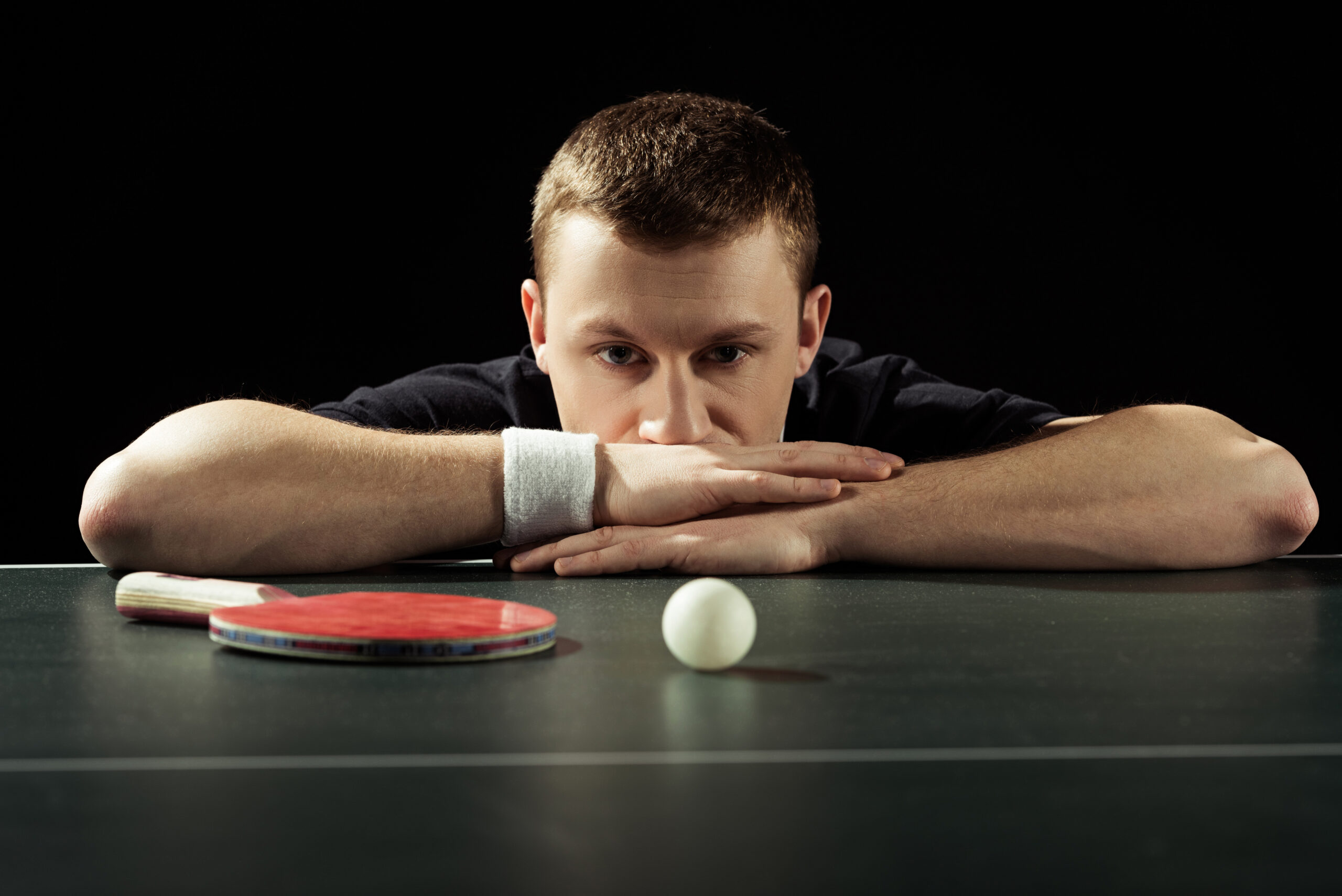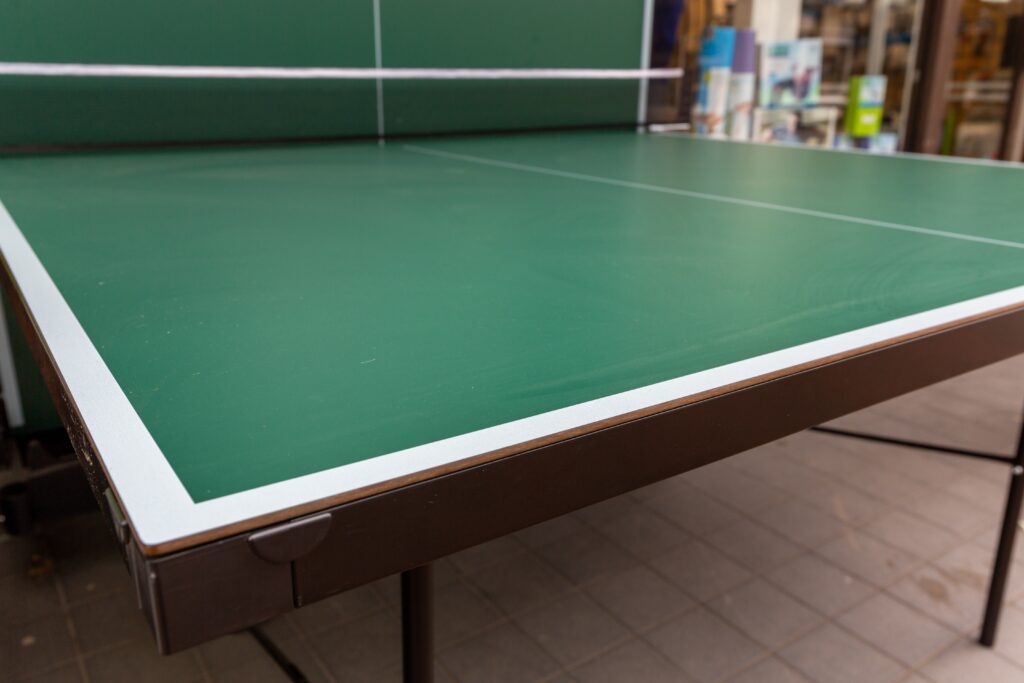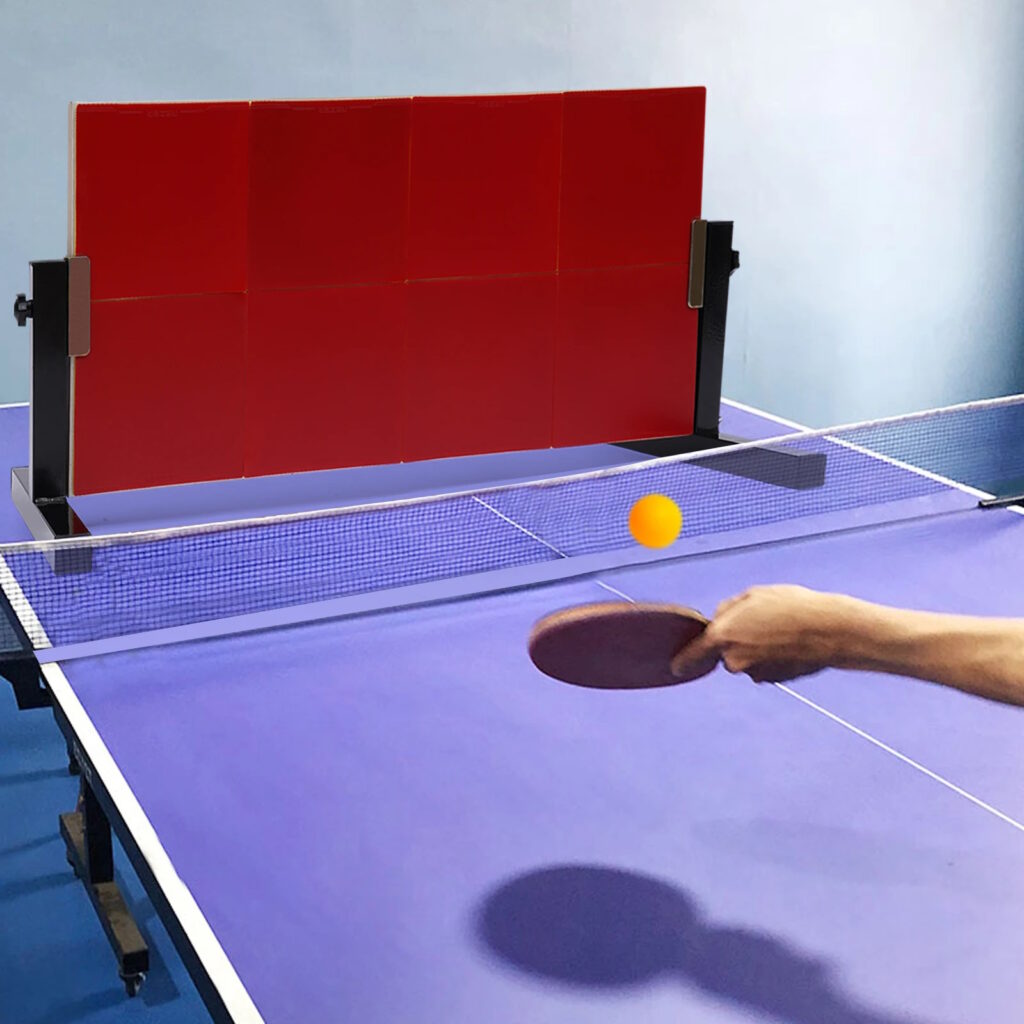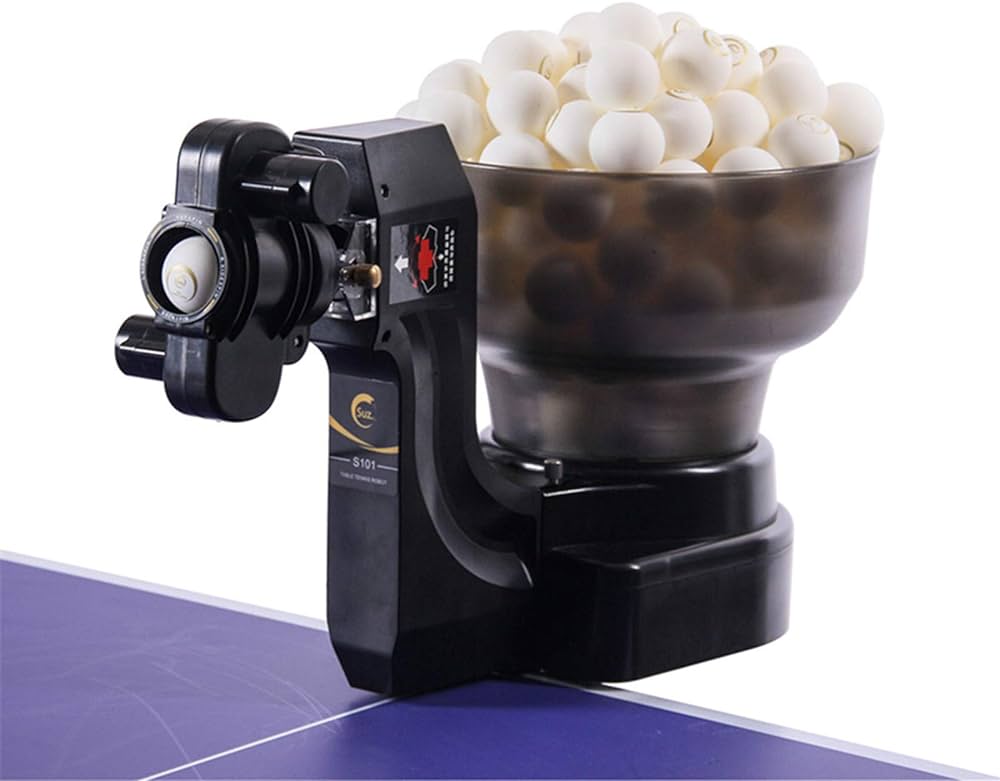Engaging in solo ping pong practice is a powerful method to refine your skills, enhance precision, and stay connected to the game when a partner is unavailable. Whether you're a beginner seeking to build foundational techniques or an advanced player aiming to fine-tune specific aspects of your game, practicing alone offers a range of innovative methods. From practicing at home with limited space to exploring specialized equipment designed for solo sessions, this comprehensive guide explores various approaches to help you elevate your ping pong skills independently.
Can you practice ping pong alone? Absolutely. Solo practice fills the gap when a playing partner is absent and serves as a dynamic means to surprise opponents with honed techniques.
In this article, we'll delve into the world of individual ping pong practice, unveiling the versatility of methods available for players of all levels. Whether you're honing your footwork, perfecting serves, or exploring off-table exercises, solo ping pong practice is a valuable tool for any player's journey toward mastery.
Playing ping pong alone is not only possible but can be a surprising and effective way to enhance your skills.
In this article, we'll explore various methods to practice ping pong alone, from home setups to specialized equipment. Each method offers a unique approach to improving your game and keeping you engaged, even when a playing partner isn't available.
How To Practice Ping Pong Alone: Mastering the Game by Yourself

Contents
How To Practice Ping Pong Alone at Home
Solo ping pong practice at home opens up a world of possibilities for players looking to enhance their skills without the need for a playing partner. Here’s a breakdown of effective methods for individual practice:

Single-Player Ping Pong Table/Half Ping Pong Table
Utilizing a single-player ping pong table or a half ping pong table is an excellent way to practice solo. These compact tables are designed for individual use, allowing players to engage in full-fledged matches or focused drills. Their smaller size makes them suitable for homes with limited space, providing an authentic playing experience while sharpening various aspects of the game.

Table Tennis Return Board
A table tennis return board is a valuable tool for solo players aiming to improve their shot accuracy and consistency. This specialized board allows players to practice shots by returning the ball in a predictable manner, enabling targeted drills for both offensive and defensive techniques. It’s an efficient way to hone specific strokes without relying on a partner’s responses.

Ping Pong Practice Machine
For a more dynamic solo practice experience, consider investing in a ping pong practice machine. These devices are designed to replicate various shots and spins, offering players the opportunity to practice against a simulated opponent. With adjustable settings, players can customize the speed, spin, and trajectory of the balls, creating diverse and challenging practice scenarios.
![ping pong training rod]](https://playingpingpong.com/wp-content/uploads/2024/03/how-to-practice-ping-pong-alone-5.jpg)
Table Tennis Trainer
A table tennis trainer is a portable and versatile training aid suitable for training alone to get better at ping pong. Consisting of a flexible rod with an attached ball, this device allows players to practice their strokes and footwork independently. By hitting the attached ball, players can work on timing, precision, and control, making it an accessible option for solo training sessions at home.
Practicing ping pong alone at home doesn’t mean sacrificing the quality of your training. With the right equipment and focus, solo players can engage in purposeful and effective practice sessions, improving their skills and enjoying the game independently.
The Benefits of Practicing Ping Pong Alone
Solo ping pong practice offers a multitude of benefits that contribute to a player’s overall skill development and game improvement.
Here are some key advantages to consider.
Focused Skill Enhancement
When practicing alone, players can target specific skills they wish to improve, whether it’s perfecting a particular stroke, refining footwork, or enhancing serves. The absence of external distractions allows for focused attention on individual aspects of the game, leading to more efficient skill development.
Flexible Schedule and Convenience
Solo practice provides the flexibility to train at any time that suits the player’s schedule, making it convenient for individuals with busy routines. Players can engage in practice sessions without relying on a partner’s availability, ensuring consistent and personalized training.
Improved Muscle Memory
Repetitive drills and exercises during solo practice contribute to the development of muscle memory, helping players execute movements more instinctively during actual gameplay. This increased muscle memory enhances overall control and precision, especially in crucial moments.
Innovative Training Techniques
Learning how to play ping pong encourages players to explore innovative training methods, such as using a return board, a half ping pong table, or other specialized equipment designed for individual training. These unique approaches add variety to training sessions and keep the learning experience dynamic and engaging.
Enhanced Mental Toughness
Solo practice fosters mental resilience as players push themselves to maintain focus and motivation without the external encouragement of a partner. This mental toughness cultivated during solo practice can contribute to improved performance and concentration in competitive scenarios.
Adaptable to Limited Spaces
For those with limited space at home or other constraints, solo practice offers adaptable solutions. Players can explore off-table exercises, shadow play, or use compact training equipment to maximize their training in confined areas.
Embracing solo ping pong practice goes beyond compensating for a lack of playing partners; it is a strategic and effective approach to becoming a well-rounded and skilled player. Whether it’s honing technical skills, maintaining a consistent training routine, or exploring innovative methods, the benefits of solo practice extend far beyond the confines of traditional gameplay.
Situational Applications of Practicing Ping Pong Alone
While the benefits of solo practice are evident, understanding the situational applications enhances its effectiveness in specific scenarios. Let’s explore various contexts where practicing ping pong alone becomes a strategic and valuable choice.
Home-Based Training
For enthusiasts with limited access to a formal table tennis setup or those seeking convenience, home-based training offers a practical solution. Practicing alone at home allows players to maintain and enhance their skills without the need for a dedicated playing partner.
Utilizing single-player tables, return boards, or even practicing strokes against a wall can transform any space into a personalized training ground. These methods are not only effective but also promote regular, accessible practice.
Skill Refinement
Players aiming to fine-tune specific aspects of their game can benefit significantly from targeted solo practice. Whether it’s perfecting a particular stroke, improving footwork, or mastering a new serve, solo sessions provide the focus needed for skill refinement.
Through deliberate and repetitive drills, players can isolate and work on specific elements of their game. This approach allows for concentrated efforts on areas that may need extra attention, contributing to a more well-rounded and polished playing style.
Pre-Match Preparation
Athletes preparing for upcoming matches, tournaments, or competitions often require focused and individualized training sessions. Solo practice becomes instrumental in preparing both physically and mentally for the challenges ahead.
Implementing match-specific scenarios during solo sessions can simulate real-game situations. This includes practicing serves, returns, and strategic plays that align with the anticipated challenges in the upcoming matches.
Physical Conditioning
Beyond the technical aspects, solo practice can serve as an excellent avenue for maintaining and enhancing physical fitness. Incorporating fitness routines alongside ping pong drills contributes to an overall athletic advantage.
Integrating agility exercises, cardio workouts, and strength training into solo practice sessions promotes well-rounded physical conditioning. This holistic approach not only improves on-table performance but also supports general health and endurance.
Mental Resilience
Solo practice isn’t just about the physical aspects of the game; it also plays a crucial role in developing mental resilience. Players can use solo sessions to enhance concentration, focus, and strategic thinking.
Engaging in deliberate and mindful practice, visualizing scenarios, and maintaining a disciplined routine contribute to mental fortitude. This becomes especially valuable during intense and competitive situations.
Other Table Tennis Practice Equipment
In addition to specialized tables and training aids, there are various other pieces of equipment that can elevate solo ping pong practice sessions. Here are some notable options to consider:
- Solo Playback Feature on Standard Tables: Many standard ping pong tables come with a solo playback feature, allowing one-half of the table to be raised for solo play. This feature enables players to practice against their own shots, providing a convenient and straightforward way to engage in solo training without additional equipment.
- Practice Balls With Varying Characteristics: Investing in a set of practice balls with different characteristics, such as varying levels of spin and bounce, adds versatility to solo practice. Players can simulate a variety of playing conditions, enhancing their adaptability and responsiveness during matches.
- Mobile Apps for Virtual Training: Embrace technology by exploring mobile apps designed for virtual ping pong training. These apps often feature interactive drills, challenges, and tutorials that guide players through solo practice sessions. While not physical equipment, these apps can add a digital dimension to your training routine.
- Shadow Play and Footwork Drills: Sometimes, effective solo practice doesn’t require any equipment at all. Shadow play involves simulating strokes and movements without a ball, helping players focus on technique and footwork. This form of practice enhances muscle memory and can be easily done anywhere.
- Mini Nets for Targeted Accuracy: Mini nets or target nets are portable and adjustable nets that can be attached to the table. These aids help players improve their accuracy by setting specific targets for their shots. Practicing with mini nets adds an element of precision to solo training sessions.
- Fitness and Conditioning Equipment: Don’t overlook the importance of physical fitness in ping pong. Incorporating fitness equipment, such as resistance bands or agility cones, into your solo practice routine can contribute to improved strength, agility, and overall physical conditioning.
- Multi-Ball Training Devices: Some training devices are designed to hold multiple balls, allowing players to practice consecutive shots without interruption. These devices help simulate rally scenarios, improving shot consistency and reflexes during fast-paced exchanges.
Exploring various table tennis practice equipment options ensures that solo players can keep their training routines engaging, challenging, and well-rounded. Whether incorporating technology, fine-tuning shot accuracy, or focusing on physical conditioning, the right equipment can enhance the effectiveness of solo ping pong practice.
Frequently Asked Questions
Read on for answers to your questions about learning how to practice ping pong alone.
Can You Practice Table Tennis Against a Wall?
Absolutely. Practicing against a wall is a fantastic way to enhance your table tennis skills when you don’t have a playing partner. The wall serves as a reliable rebound surface, allowing you to work on your strokes, footwork, and overall technique. Start with simple rallies, focusing on control and precision.
As you progress, you can incorporate various strokes, spins, and even footwork patterns. Utilizing a wall for practice is a versatile and accessible method, offering an effective solo training option.
How Can I Practice Ping Pong Without a Table?
Table-less practice is indeed possible and beneficial for improving specific aspects of your game. Shadow play is one method where you simulate strokes and movements without a ball. This allows you to concentrate on your technique, posture, and footwork.
Additionally, fitness drills and exercises can contribute significantly to your overall performance on the table. Incorporating resistance bands, agility drills, and cardio exercises into your routine can enhance your physical conditioning, translating to better on-table performance when you do have access to a table.
Do You Need To Be Fit To Play Table Tennis?
While table tennis doesn’t demand extreme physical fitness, being in good shape can certainly enhance your game. The sport requires agility, quick reflexes, and endurance. Maintaining a reasonable level of fitness can contribute to improved movement around the table, faster recovery between points, and sustained focus during matches. Regular exercise, including cardiovascular activities and strength training, can positively impact your overall performance and enjoyment of the game.
Is Ping Pong Good for the Brain?
Absolutely. Ping pong is often referred to as “chess on steroids” for a reason. The fast-paced, strategic nature of the game stimulates the brain and promotes cognitive benefits. Players need to think quickly, anticipate opponents’ moves, and make split-second decisions.
The hand-eye coordination required in ping pong enhances neural connections. Regular play can improve concentration, mental acuity, and even foster a sense of well-being. Whether played recreationally or competitively, ping pong is an excellent way to keep your brain active and engaged.
Practice Table Tennis Today
In the realm of table tennis, the journey to mastery doesn’t always require a playing partner. We have illuminated various methods and equipment to empower players to refine their skills independently. From honing strokes against a wall to utilizing specialized training tools like return boards and practice machines, the solo player can embark on a purposeful and effective training regimen.
Solo practice extends beyond the physical aspects of the game, offering mental and cognitive benefits. The focused, deliberate nature of practicing alone cultivates concentration, strategic thinking, and a deeper understanding of one’s playing style. It’s not just about hitting the ball; it’s about honing your craft, refining your technique, and developing the resilience that sets champions apart.
So, whether you’re perfecting your serves at home, embracing the versatility of table-less practice, or incorporating fitness routines to elevate your overall game, the solitary journey in ping pong is a meaningful and rewarding endeavor. By embracing the art of self-improvement, players can unlock new dimensions in their game, ensuring that every solo session contributes to their evolution as skilled and strategic table tennis enthusiasts.
